Whew, quite a mouthful of a name, but then it’s quite a sizeable machine. That is, if you’re after something that will easily swallow five adults and make an out-of-my-way noise.
Back in the day, the AMG-titivated Mercedes offerings were based on saloons, so you had quick, loud and proud versions of C-, E- and S-Class, packing a naturally aspirated 6.2-litre V8.
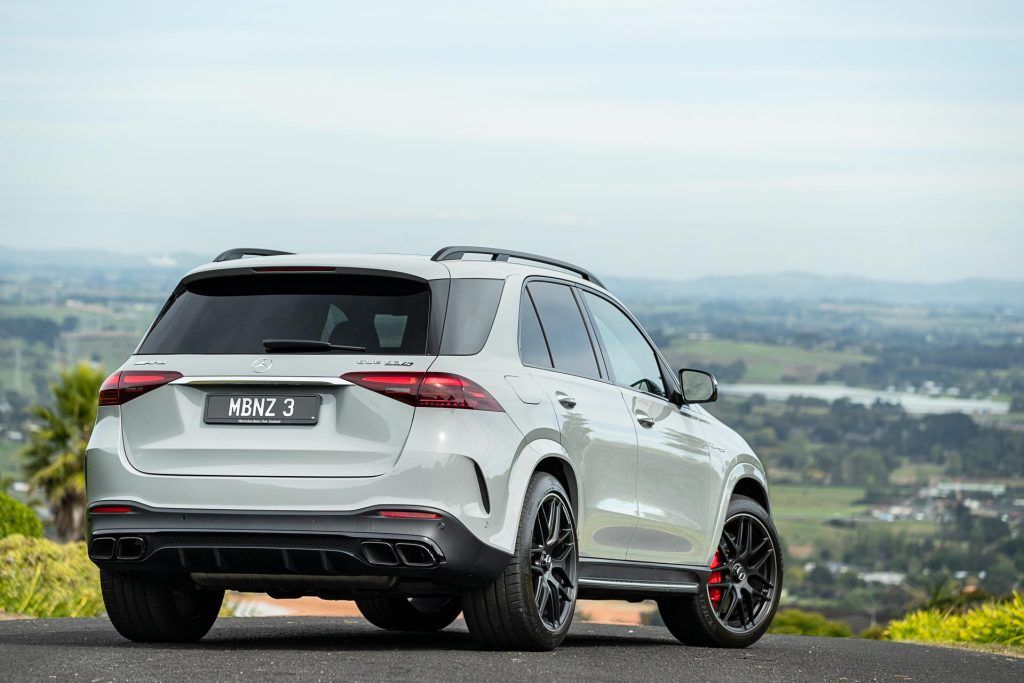
The former two were pretty wild, and eventually, with so much power, they had to go AWD just to keep things roof-side up. In part that was due to performance as well. It became too difficult to get the power down in a rear-wheel drive super saloon.
Other brands already well ensconced with AWD – Audi then – continued to raise the pace with better traction and so its German rivals were forced to follow suit.
Sprint times continued to drop, and while you’d have expected this machinery to become hard riding with rising wheel diameters and vanishingly small sidewalls, that really hasn’t been the case as suspension became ever more sophisticated, adaptive damping to the rescue.
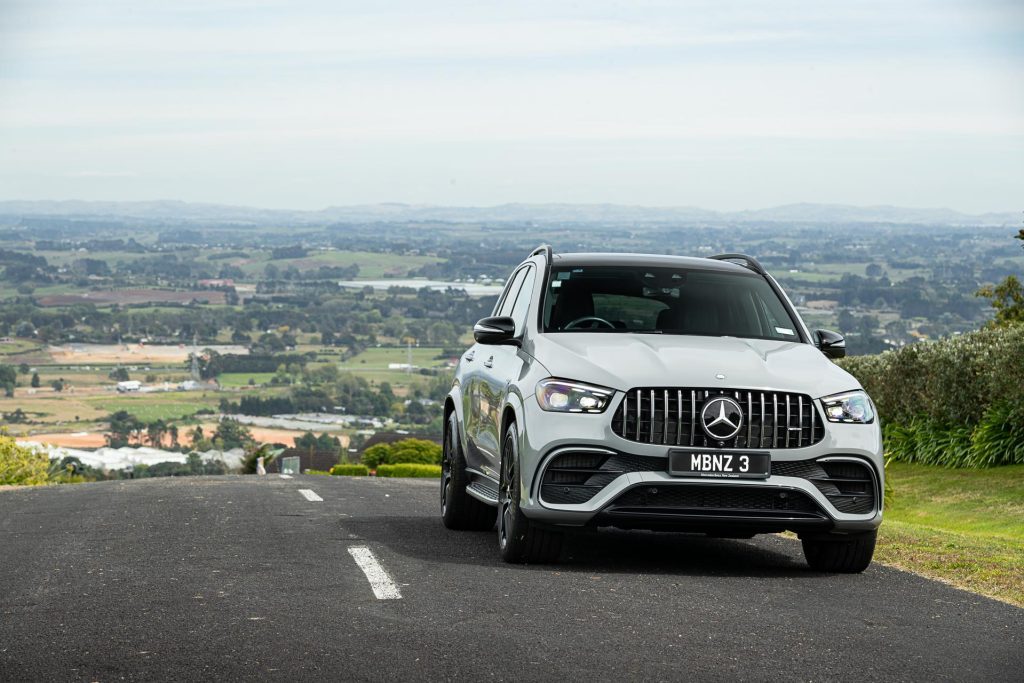
And then, sedans were no longer in fashion. SUVs and crossovers were the next big thing. It soon became clear to car companies that if they didn’t have some form of SUV or crossover, their days were numbered.
All the Japanese got in on the high-rise rush early, so too the Europeans with BMW, Audi and Mercedes all delivering elevated monoform family transportation.
Jeep and Land Rover were only ever thus. And the newcomers to the market, like the Chinese, essentially started in with SUVs and crossovers.
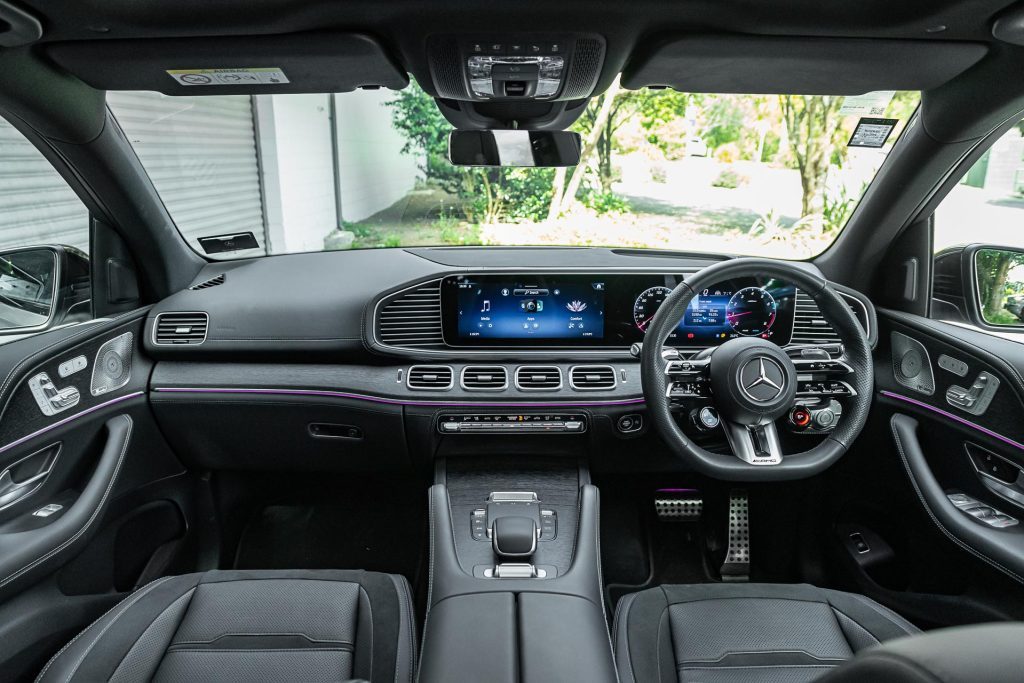
Just as quickly, people wanted sportier versions of their elevated machinery. They expected them to be as quick as the sports sedans of yore and to handle just as well. One of those they would get.
So it also proved with electrification, the return of the electric sedan relatively short lived, electric SUVs quickly on the ascendancy. And, of course, folk wanted stupid quick versions of those too.
Now there are AMG electric SUVs from Mercedes. The ICE-powered SUVs from Benz also have their AMG counterparts, right down to the compact AMG GLA 45.
The AMG GLC 63 proved one of the quickest medium SUVs we’ve ever tested and now we’re driving the $255k Mercedes-AMG GLE 63 S 4Matic+ SUV.
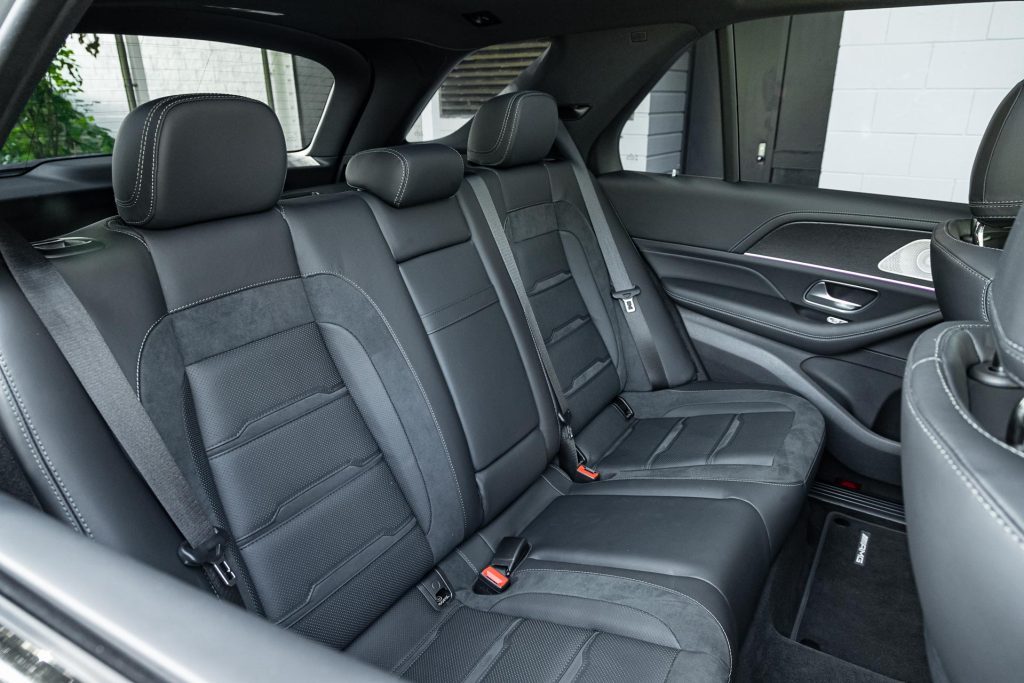
Does the GLE 63 work or not? Well, we’d just hopped out of the GLE 450 d (see test next month) and straight into the GLE 63.
And to cut a long story short, we’d probably save the $80k extra spend on the AMG variant because the GLE 450 is just so much more relaxing to drive.
Sure, it isn’t as snappy on the acceleration front – the diesel manages a sub-6sec sprint to the sub-4sec sprint time of the GLE 63 – but what’s more important day to day is how effortless it is, especially the overtake and the difference is somewhat less between the pair (3.8 vs 2.4sec).
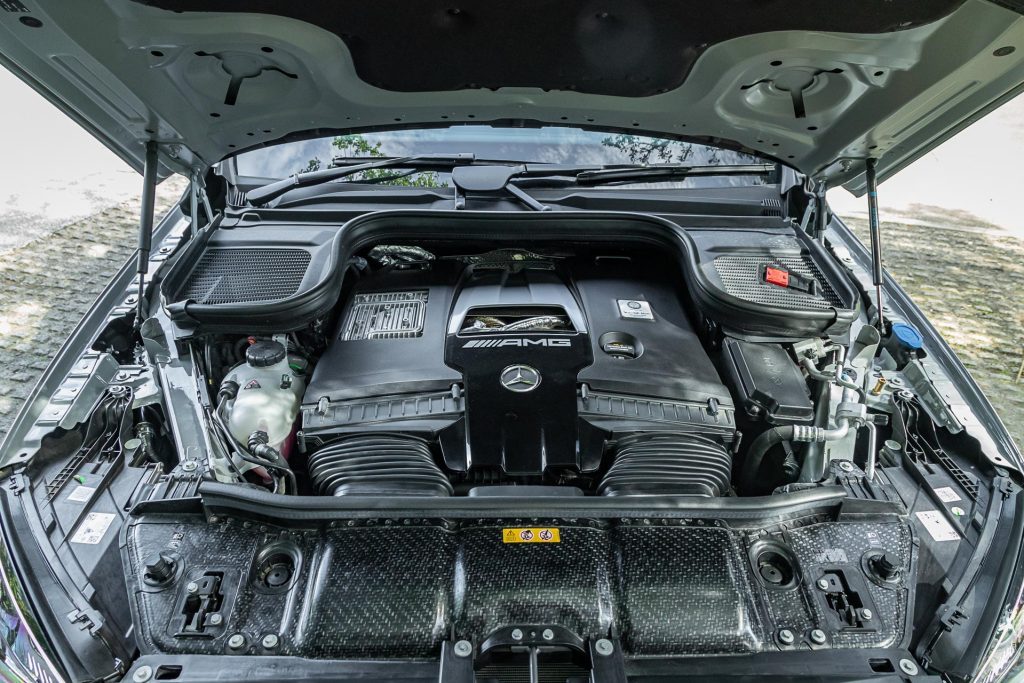
In fact, the big diesel is just the big easy, fullstop. That’s in part because the 450 d gets 750Nm to play with, only 100 shy of the big dog’s 850Nm. Course the latter manages 450kW thanks to its 4.0L biturbo V8, to the 270kW tally of the diesel.
Like the latter, the 63 S also benefits from an integrated starter generator, a touch more potent than the 450’s at 16kW and 250Nm.
On the other hand, you’re looking at claimed mean fuel use of 7.4L/100km for the oiler, and 14.6 (rightcar.co.nz) for the 63 S, so the latter is essential twice as thirsty. Crikey.
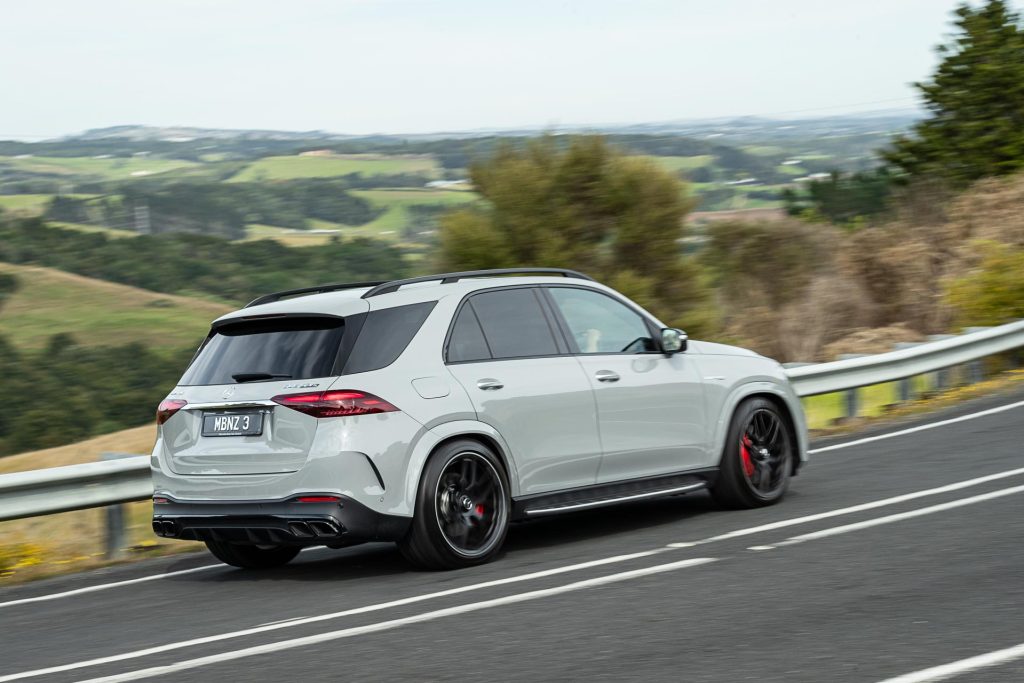
We once saw 9.9L/100km on the motorway under cruise control in the AMG but for the life of the vehicle it had been registering 14.8L/100km, very close to the rightcar average claim. All that sound and glory doesn’t come free, sadly.
Which brings us to how these two go about things. With the GLE 450 d, the builders have tried to engineer the sounds of silence and done rather a fine job.
For the most part you’d only pick it was a diesel initially. Both models run 48v mild hybrid systems so while they each do the stop and start thing when you come to a halt, the restart is all but inaudible.
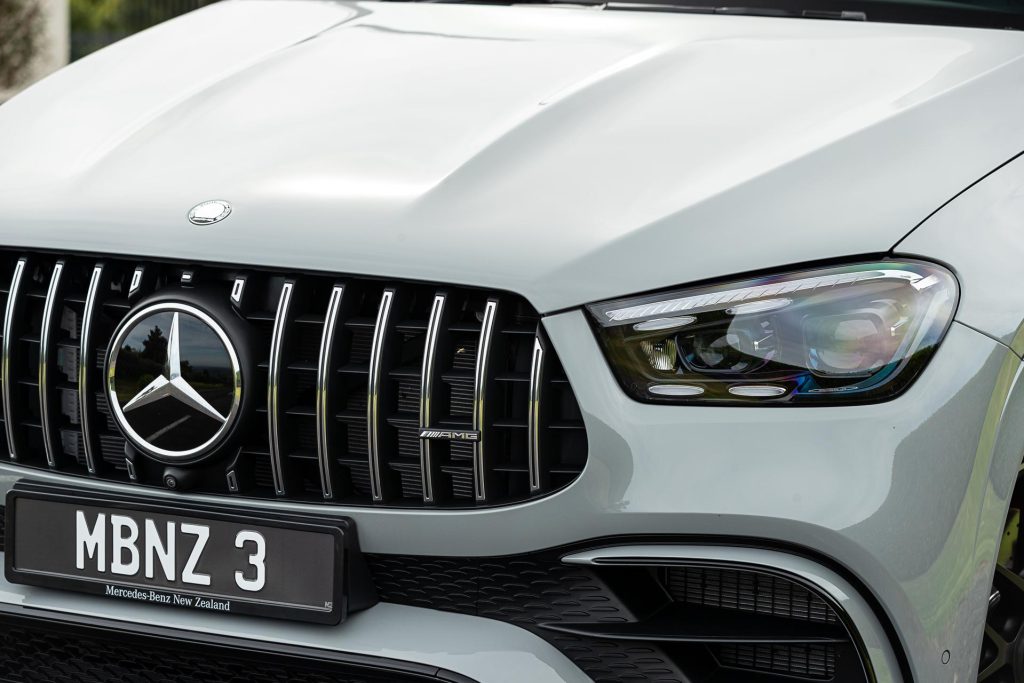
But on the prowl the GLE 63 is only ever vocal and the people who might want their last V8 before they’re outlawed will think this does the trick nicely, especially in the Sports modes when the exhaust valves are open.
Then it’s sure to wake up drivers asleep at the wheel as you burn past them. Only it’s not as righteous as it once was in 6.3 naturally aspirated form.
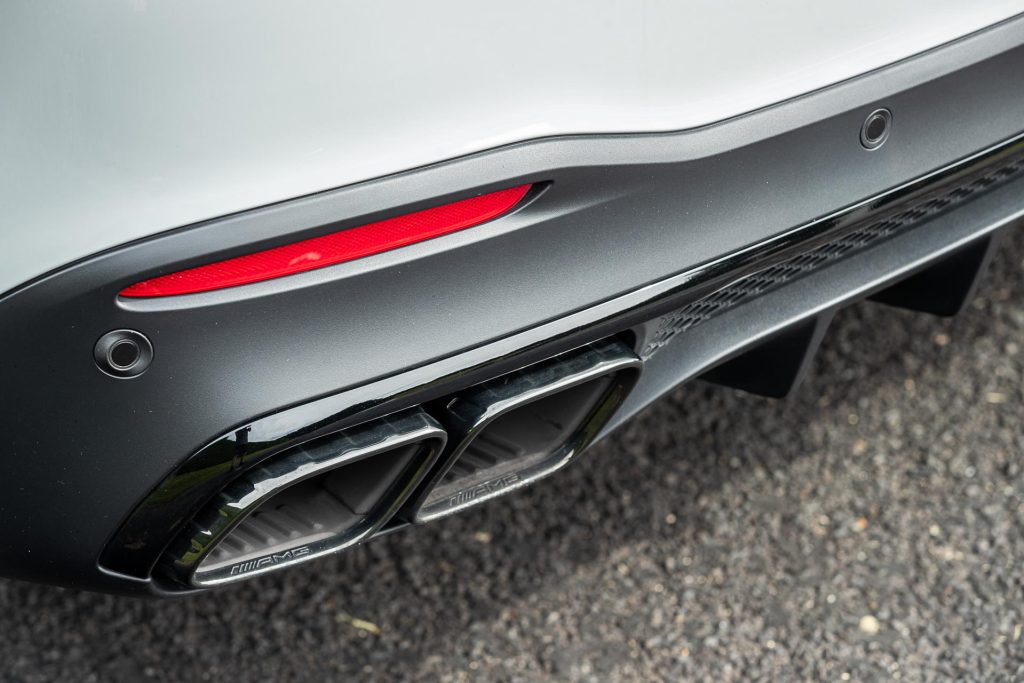
Mention of Sports modes, we did the performance figures in Race mode, thinking there’d be a race start programme. But that only applies to vehicles with the MCT ‘box, not the torque converter nine-speed like this has.
So it’s just a matter of mashing the accelerator with the left foot on the brake and when the revs settle at around 2500rpm you step off the stoppers. Speaking of which, those enormous discs are pretty effective, a full ABS activation from 100km/h requiring 34.35m of tarmac.
That’s certainly something for a machine that weighs in at 2420kg. Performance figures overlay those of the smaller GLC 63. So that’s pretty decent given this is roughly 400kg heavier.
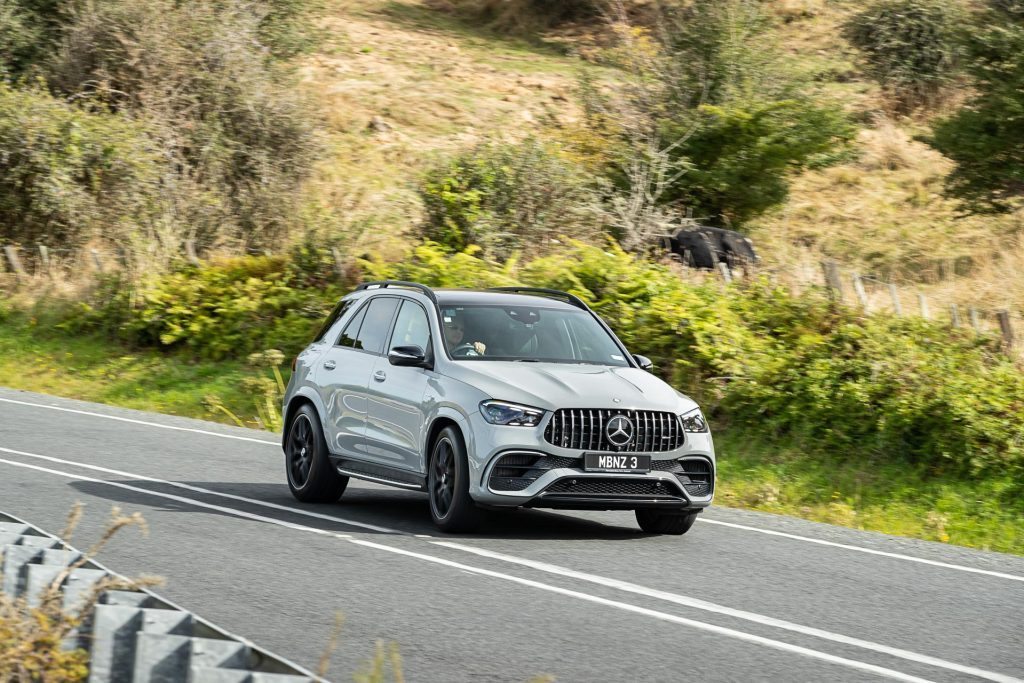
And to keep it all seemly on road, this has plenty of electronic aids, including Active Ride Control (switching between three damper settings) and you’d not credit how it winds itself through more testing bends.
But it does involve some work. You’re aware of sawing away at the wheel and the ride is never quite as nuanced and soothing as it is in the GLE 450 d, despite the air suspenders.
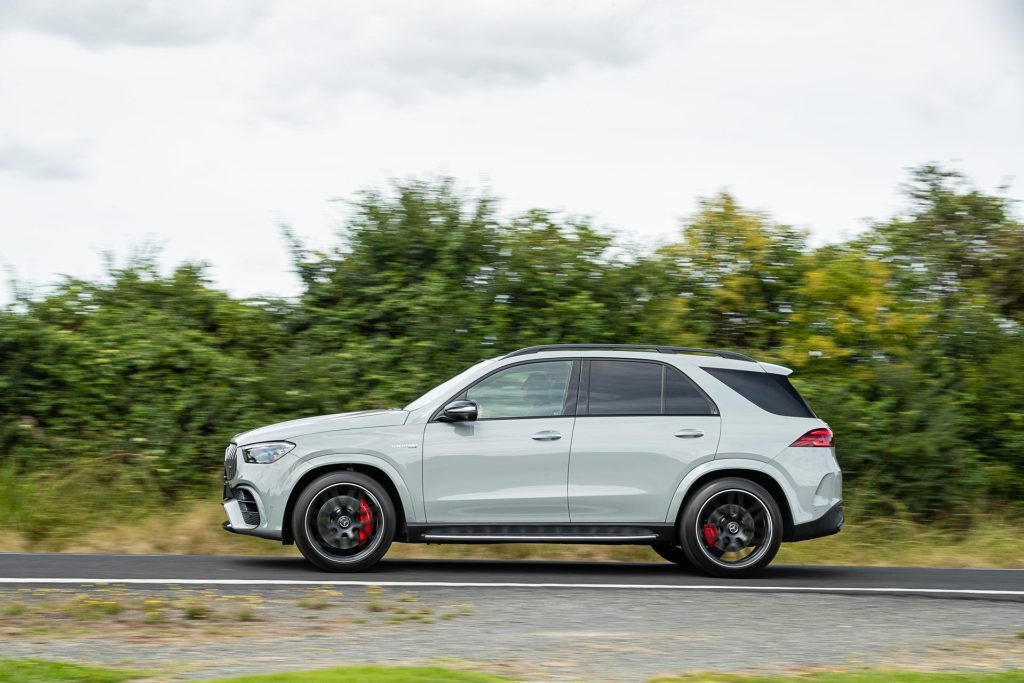
So it trades some squish for some tension. The sterling rubber, meaty PZeros, of the 22-inch low profile variety, along with AWD ensure a stack of grip but we noticed some oversteer on liftoff when pushing on.
Plenty of weight carried high is not easy to reign in. Similar sized electric SUVs at least have the bulk of their weight carried low but there’s even more of it so that’s also an issue. Let’s just say that the sedan-based 63s are much more satisfying to massage through corners.
And while the swags of low profile rubber along with controlled damping ensure plenty of grip, this doesn’t ride anything like as well as the GLE 450 d.
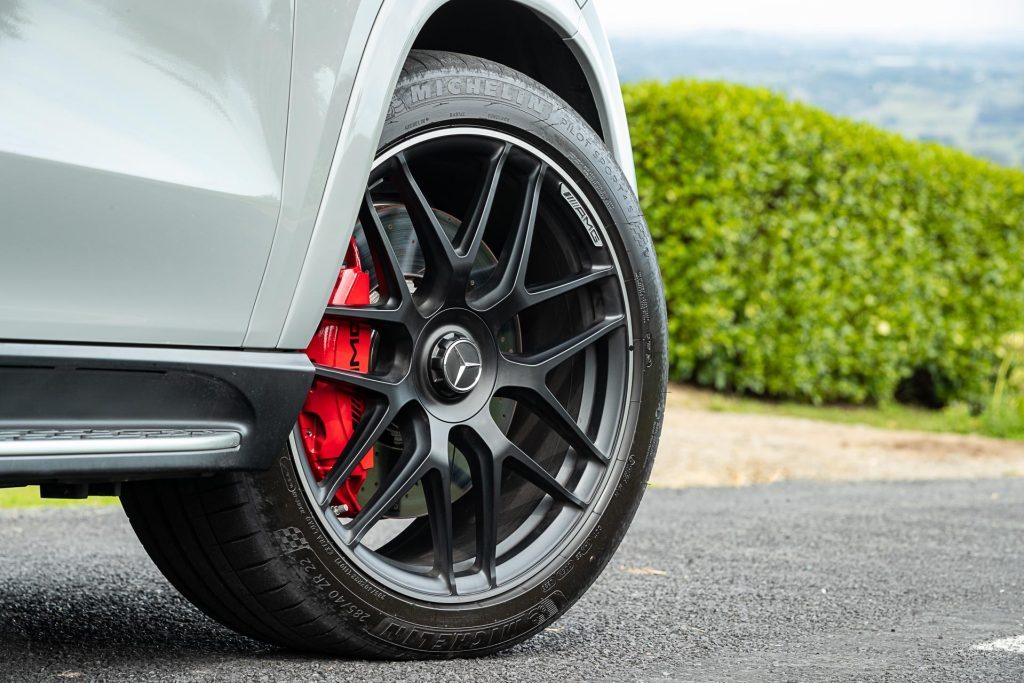
Sure, you sweep through corners quicker, but the 450 d has the better ride and handling mix, and so is more family appropriate.
That said, the GLE 63 can hold a swag of gear in the back – we easily got our clubs and trundler in the load bay (630-2055L) and it will handily tote three extra adults in what cannot ever be described as the cheap seats.
They’re not as configurable as those in the seven-seater GLE 450 which move every which way, however.
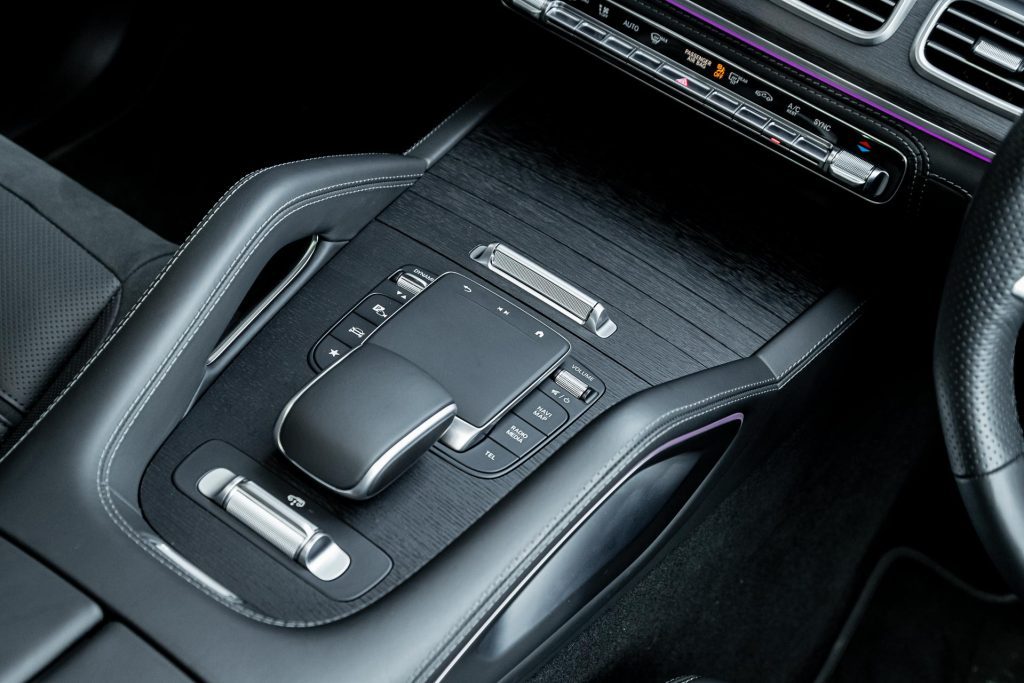
For the extra cost of the 63, you don’t really get a swag more gear. The seats look and feel nicer, and they have a pleasing deep seat massage therapist to iron out aching back muscles.
There’s seat ventilation too. The other updates relate more to dynamics, the AMG Active Ride Control, electronic rear LSD and AMG dynamic engine mounts.
Things like the head-up display, Burmester sounds, MBUX assistant, panoramic sunroof, wireless charging, AMG line exterior and body styling, Keyless go, tinted windows, the parking package (includes surround cameras and self parking), plus all the driving assistants come standard in both the 300 d and 450 d.
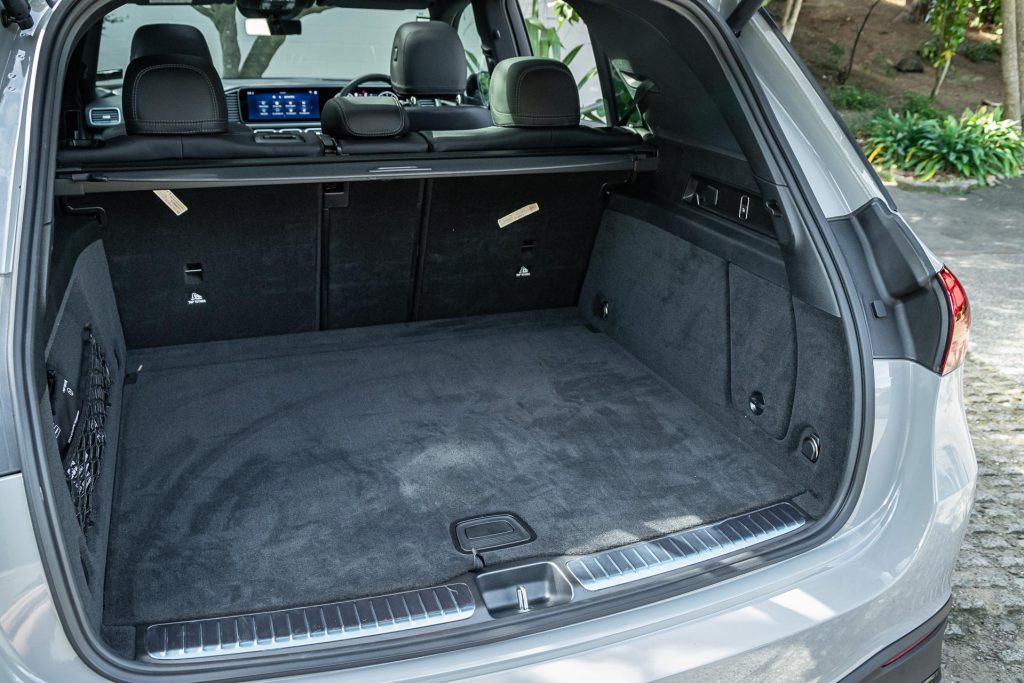
The pair have the same 3500kg braked towing capacity too.
So we’d say think carefully about what you really really want because hot versions of large SUVs aren’t as sporty as their lower riding forebears.
In which case, a cruisy diesel SUV will probably make more sense unless you have a particular thing against compression-ignition technology, or you just pine for that V8 soundtrack.
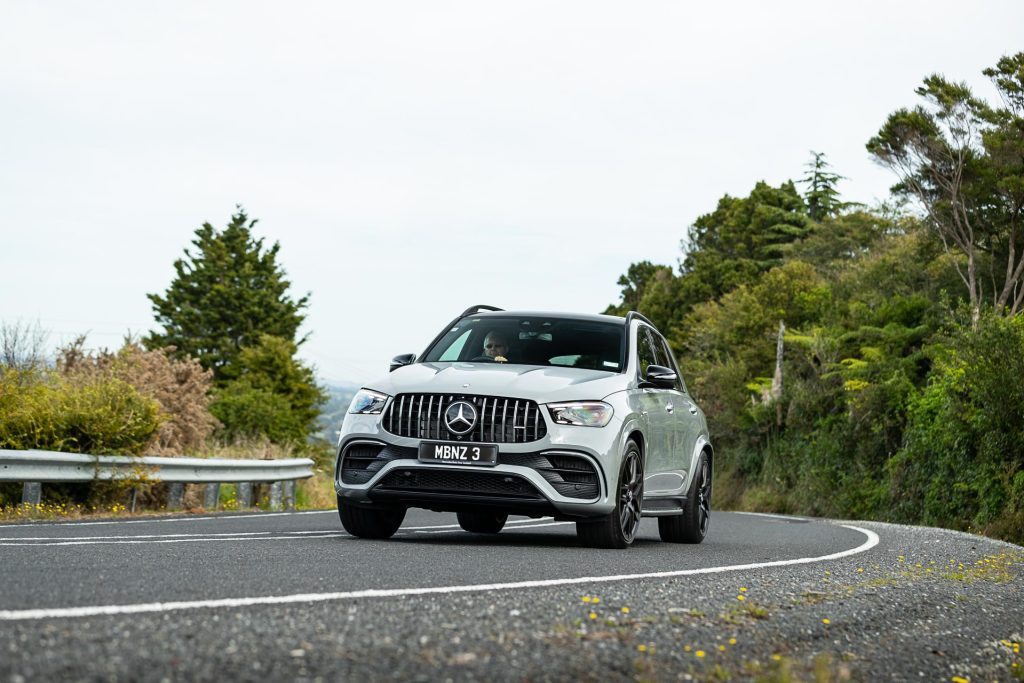
Otherwise, there’s the 320kW/560Nm GLE 53 4Matic with a 3.0L six-cylinder petrol engine mated to a 48v mild hybrid system, with mean fuel use of 10.1L/100km that’s priced at $204,900.
| Model | Mercedes-AMG GLE 63 4Matic+ |
| Price | $254,900 |
| Engine | 3982cc, V8, T, DI |
| Power | 450kW @ 5750-6500rpm |
| Torque | 850Nm @ 2500-4500rpm |
| Hybrid System Output | 16kW / 250Nm |
| Drivetrain | 9-speed auto, AWD |
| Turning circle | 12.4m (2.75 turns) |
| Fuel Use | 14.6L/100km |
| C02 Output | 336g/km |
| 0-100km/h | 3.66 sec |
| Tyre Size | f/r-285/40R22 r-325/35R22 |
| Fuel Capacity | 85L |
| Stability systems | ABS, ESP, TV |
| Safety | AEB, ACC, BSM, LDW, RCTA, ALK, AHB |
| Luggage Capacity | 85L |
| Tow rating | 750kg (3500kg braked) |
| Service intervals | 12 months/16,000km |
| Warranty | 3 years/unlimited km |
| ANCAP rating | 5 Stars (2019) |
| Weight | 1265kg (claimed) |
This story first appeared in the May 2024 issue of NZ Autocar magazine.


